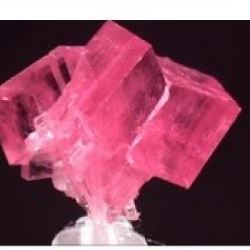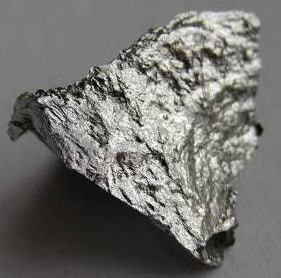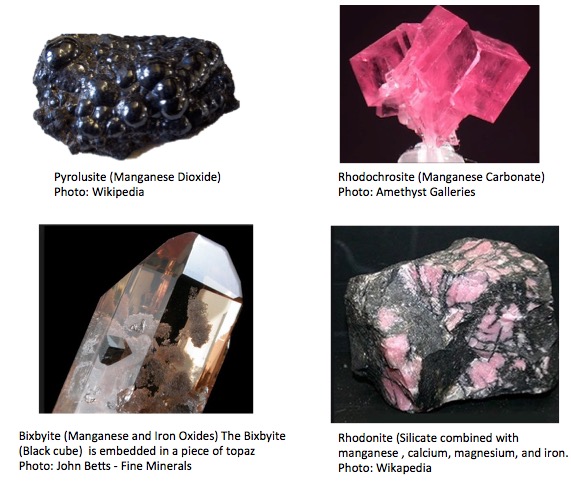
Just to satisfy my inner chemist I like to write about interesting elements now and then. Then happens to be now. Some of the aren't especially useful or commonly used (See: Gallium: Melts In Your Mouth, Not Your Hands!), and some are to be avoided at all cost (See: Fluorine: The Element From Hell).
Disclaimer:
Guys - if you happen to be on a first date, a tenuous situation on a good night, I would recommend that you don't bring up manganese. It will reflect poorly on you (See: Boring loser). There is really no upside whatsoever, and if you really need me to tell you the downside, just cancel the date in advance because it's already hopeless.
OK, now that we have that idiocy out of the way, the following is actually pretty cool.
Manganese exists in a variety of different forms - in minerals, in a wide variety of chemical compounds, and as the pure metal. It has some important uses (1). Let's take a look.
1. The pure metal isn't all that interesting, nor does it look so.

Elemental manganese. Zzzzzz. Photo: Wikipedia
OK, I take it back. It can look interesting under the right circumstances:

A Hovering Manganese Cow Antique (because you never know when you might need one). Photo: Royal Chemical Society
Perhaps the above antique doesn't belong in every living room, but it sure makes a helluva conversation piece. And it also has symbolism. Manganese is magnetic, and this is where it got its name in 1774. 'Magnes' is Latin for magnetic. The choice of the cow is not arbitrary. It symbolizes that the element is essential for cows—and just about every other life form)—which get it from grazing. Trace quantities of manganese are crucial for enzymes that catalyze a number of biochemical processes, including the synthesis and breakdown of amino acids, and the metabolism of carbohydrates.
Although the metal may not look like much, the same cannot be said for the minerals that contain it. Some are spectacular.

Manganese is commonly used in chemistry labs in the form of potassium permanganate (KMnO4), a potent oxidizing agent. (2) But anyone who has even used it will have the same thought if you mention it—purple. It is just about impossible to be more purple than potassium permanganate. This can be seen from the simple serial dilution experiment depicted below. Solid permanganate, which is such a dark purple that it almost looks black was dissolved in 150 mL of water in the beaker on the left (all the beakers were originally filled with 150 mL of water). The weight of the solid is not given, so I'm estimating that the spoon contained 200 mg. At this concentration (1.3 mg/mL), it is even not possible to see through the solution. Then 40 mL of this solution, which now contains 53 mg of permanganate was added to the second beaker of water. Even at this concentration (0.03 mg/mL ), it is impossible to see through the solution. It is not until the second serial dilution that this becomes possible to see through the solution. (0.008 mg/mL ). In beaker #6 a trace of color can be seen even though 0.6 mg of permanganate is present (0.0002 mg/mL ). To put this in perspective, the concentration of salt in the ocean is 35 mg/mL . So potassium permanganate is so purple that you can still see the color at a concentration that is 175,000 more dilute than salt water. That's some badass purple.

Serial dilution of potassium permanganate. Source: YouTube. (Can anyone spot the error?)
And here's an interesting reaction which demonstrates another way to make the purple go away. When ethanol is added to a permanganate solution, it is immediately oxidized to acetic acid, and the permanganate is reduced from Mn+7 to manganese dioxide (Mn+4).
QUIZ: A reaction of the same type can get you tossed in jail. What is it?
So, you now have more information on manganese than you'll ever need. And the knowledge to avoid it on a date.
Notes:
(1) The primary uses for elemental manganese are making steel and alloys of aluminum, which make is stronger.
(2) For this reason, potassium permanganate is sometimes used to disinfect wounds.
